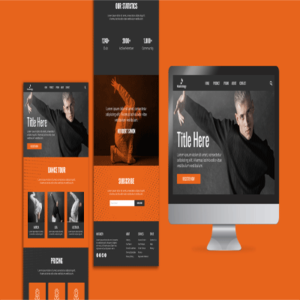In today’s digital era, a well-designed website is essential for businesses to thrive. Our services stand out by offering customized solutions, focusing on user experience and performance, and providing ongoing support to ensure your website remains a valuable asset in achieving your business goals.
Description
Speciality: Content management and user interaction.
Front-end: HTML, CSS, JavaScript.
Back-end: Server-side scripting language (e.g., PHP, Python, Ruby).
Professionals involved: Web designer, front-end developer, back-end developer, database administrator.
Man hours: Moderate to high, depending on complexity.
Approximate rate: $2,000 – $10,000.
- Homepage:
- Featured Posts: Showcase selected blog posts with images or summaries.
- Recent Posts: Display a list of the most recent blog posts.
- Categories or Tags: Provide navigation to explore posts by topic or keyword.
- Blog Posts:
- Individual Blog Post Pages: Each blog post has a dedicated page with a unique URL.
- Title and Content: Display the title and full content of each blog post.
- Author and Publication Date: Attribute each post to its author and display the publication date.
- Comments and Discussion: Allow readers to leave comments and engage in discussions.
- Categories and Tags:
- Categorization: Organize blog posts into categories (e.g., Technology, Lifestyle, Travel).
- Tagging: Assign relevant tags to posts for easier searching and filtering.
- Search Functionality:
- Search Bar: Enable users to search for specific blog posts by keyword or phrase.
- Search Results Page: Display a list of relevant posts based on the search query.
- User Registration and Authentication:
- User Registration: Allow users to create accounts to interact with the blog (e.g., leave comments, follow authors).
- User Login: Provide a secure login system for registered users.
- Author Profiles:
- Author Pages: Display information about each author, such as their bio, profile picture, and social media links.
- Author Archives: Group posts by author, allowing readers to browse all posts by a specific author.
- Related Posts:
- Suggest related posts at the end of each blog post to encourage further reading and engagement.
- Social Sharing and Integration:
- Social Sharing Buttons: Allow users to share blog posts on social media platforms.
- Social Media Integration: Display links to your social media profiles and encourage users to follow your accounts.
- RSS Feed:
- Provide an RSS feed to allow users to subscribe and receive updates on new blog posts.
- Pagination:
- If there are a large number of blog posts, implement pagination to improve page loading speed and navigation.
- Analytics and Metrics:
- Integrate analytics tools to track website traffic, user engagement, and popular content.
- About Page:
- Provide information about the blog, its purpose, and the authors.
- Include contact information or a contact form for inquiries.
Features and pages commonly found in a blog website. Python Django is a powerful web development framework that can efficiently handle the backend logic, database management, and URL routing required for a robust blog website.




